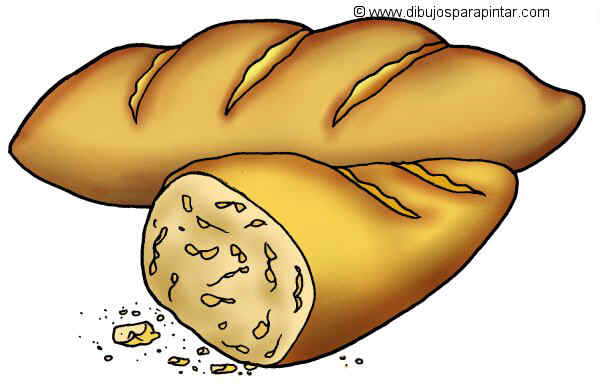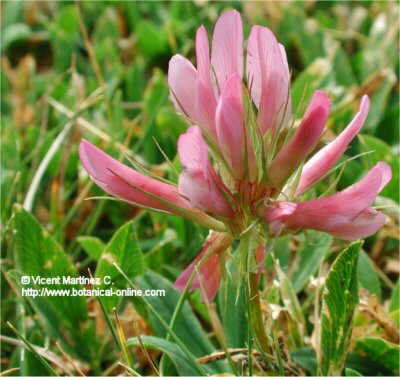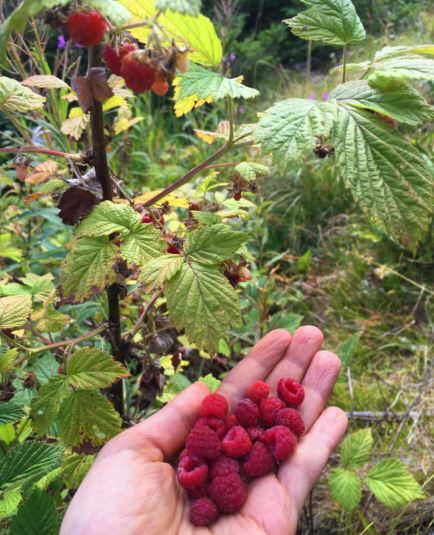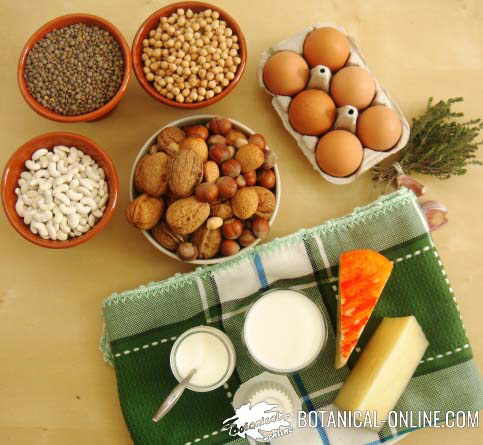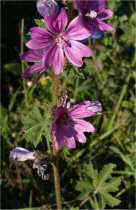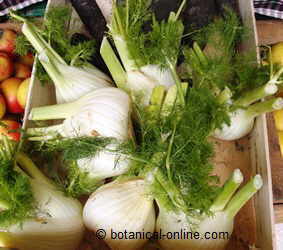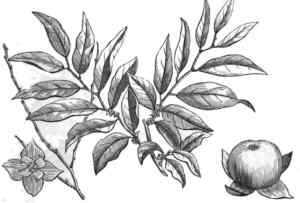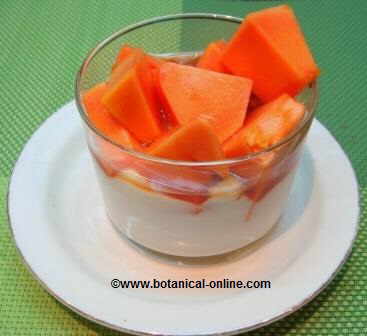Contents
- 1 How to grow blueberries
- 1.1 Characteristics of Blueberries
- 1.2 Blueberries. Irrigation and moisture:
- 1.3 Blueberries. Temperature and exposure
- 1.4 Blueberries. Types and crops
- 1.5 Main varieties of blueberries:
- 1.6 How to plant blueberries?
- 1.7 Maintenance and collection
- 1.8 When to pick blueberries?
- 1.9 Blueberries. Types of land and fertilizers
- 1.10 How to prepare the ground?
How to grow blueberries
![]()
Characteristics of Blueberries
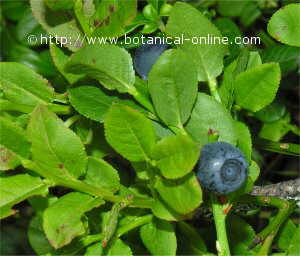
Blueberries (Vaccinium), also called bilberries, are plants of the Ericaceae family, within which we have other shrubs such as the madrone (Arbutus unedo), bearberry (uva-ursi Artostaphylos) or heather (Erica). There are approximately 450 species of blueberries, distributed especially in the Northern Hemisphere. There are plenty of them in northern and cold areas of the north hemisphere in Europe, Asia and America, but they also can be found in many habitats from the Arctic to the tropics.
The leathery leaves generally have a bright green color and may be serrated or smooth. Flowers can be white, pink, red or purple and campanulate-shaped.
Cultivated species are of particular interest because they have edible fruits and because its leaves, when the autumn comes, acquire a very prominent color. They are cultivated mostly for its fruit, which can be eaten raw or used for the production of juices, jams or to be canned.

Blueberries. Irrigation and moisture:
If the weather is wet, they do not need watering. Irrigation is necessary if it does not rain during the summer. We will ensure that water is not hard, especially free of chlorine, sodium or calcium. The best water, if the plant is outside, is the rain. In intensive plantations, it is better to make a drip irrigation so as to make the most of the water and provide some nutrients through this water.
Blueberries. Temperature and exposure
Many wildlife species have become accustomed to grow in shaded areas. However, cultivated varieties perform best when planted in the sun, but can be planted in partial shade.
In general, the cultivated blueberry is a plant that needs lots of light and can not stand the winds. If you intend to stand in a place where these are common, a site must be protected or should be protected with fences or hedges made with wind-resistant plants. Another technique is to plant these shrubs between the trees to protect them.
Blueberries prefer moist climates influenced by the sea instead of dry interior climates. They can be planted from sea level to an altitude of 1000 m above sea level. The best climate for these plants is warm-cold weather, which is characterized by not too hot days and cool nights at the time the fruit is ripening.
Blueberries can withstand heavy frosts in winter. In fact, these plants prefer cold winters, because low winter temperatures ensure there is no later flowering and become more abundant and uniform. However, frost will not be tolerated at the time they begin to sprout or when flowers or fruits are growing.
![]()
Blueberries. Types and crops
Most blueberries are varieties from American species or more cosmopolitan varieties. The main varieties are:
- Blueberry (Vaccinium corimbosum): it grows in the Northeast United States in the area known as New England. It is characterized by deciduous leaves that turn scarlet in the fall. It is a shrub with vertical aspect, that reaches 8 m high, with pale pink flowers gathered in pendulous inflorescences. Its blue-black fruits are rather large and tasty. Is the most widely cultivated.
- Black blueberry / uliginosa Blueberry (Vaccinium uliginosum): Located in the northern hemisphere. Very abundant from sea level in the colder regions of Europe, Asia and America to beyond the 3000 meters in the mountains of southern regions. (Pyrenees, Rockies, Alps, Caucasus, etc..) Is a shrub that hardly exceeds half a meter high, being 15 or 20 cm height standard. It grows in acid soils of the tundra, wetlands and coniferous forests. The fruits are black with white flesh and pink flowers. It flowers in spring and the fruits appear during summer. It is rarely cultivated but its wild fruits are collected.
- Cranberry (Vaccinium vitis-idaea) is another type of blueberry whose fruits are usually collected from wild plants. It grows in northern Europe, Asia and America and in the mountains of northern hemisphere. It usually forms a thick hedge under trees about 10 to 30 cm in height. Although very similar to blueberries, it differs because the flowers of the latter are pink, whereas the flower from the cranberry has shades of pink and stamens included within the corolla. The fruits are round and red and appear in late autumn. Its flavor is very acid so it is primarily used for making jams or jellies.
(More information on the characteristics and properties of cranberry in the listing below)
- Cranberries (Vaccinium oxycoccus): it is a plant much lower than the common blueberry and its leaves are evergreen, it usually does not exceed 10 cm in height. The bright red fruits exceed the leaves in size. There are different varieties:
- Common cranberry (Vaccinium oxycoccus palustris), which can be found throughout the boreal zone of the northern hemisphere. The leaves are very small, not exceeding 1 cm in length, with a very acid pink fruit.
- The American cranberry (Vaccinium macrocarpus oxycoccus), which is native to eastern North America, where it is grown intensively for consumption. Its leaves are much larger (they reach 2 cm in length) and the fruits are red and of sour apple flavor. It is a type of plant that forms intertwined clumps with branches up to 1 meter in diameter
- Lower Cranberry (Vaccinium microcarpum oxycoccus) is a variety with quite triangular leaves that grows in the northern zones of Europe and Asia.
Main varieties of blueberries:
- Bluecrop: It is an early variety (mid-June and early July) that produces many fruits and high quality. The fruits are thick and very strong blue color.
- Patriot: early variety, producing many high quality fruit, thick and strong texture.
- Earliblue: Very early variety and very resistant to frost. Produces many high quality fruit with high juice and sugar content.
- Bluette: early variety. Medium sized fruits with good color and plenty of flavor.
- Collins: Mid-season variety (late June – mid July), with lower production of large fruit, flattened with a wonderful aroma.
- Herbert: Mid-season variety. Large and tasty fruits.
- Spartan: Mid-season variety. High production of fruit with firm texture thick.
- Darrow: Late variety (August and September). Planes produces fruit, good flavor and light color.
- Jersey: Late variety. Produces many fruits and very large size.
How to plant blueberries?
There are different techniques to plant blueberries. Among these, we should mention:
- By cuttings: we should use 10 cm cuttings taken from twigs cut in late summer. In late autumn or winter, cuttings will be planted into the land previously prepared, about 5 cm deep and about 140 or 150 cm apart within the row and about 200 or 250 cm a groove of another. The cuttings that get roots will produce crops in mid to late summer. The method is not very safe because there are few individuals that grow roots and it does not guarantee they keep the same genetic characteristics of the orginal plant.
- By layering: In this case, in mid-to late summer, we will bend a tender branch and bury the tip about 6 cm into the soil. The new branch will root and will grow a new plant to be separated after a year (in spring) to plant it in its proper place.
- Plants with roots: It is the safest method since these have more ability to adapt to the terrain, better quality and are free of disease.
Maintenance and collection
The blueberries are shrubs that require little maintenance. The most common tasks are:
- Keeping the ground free of weeds: the more organic and natural way is through a manual procedure. This allows you to use the tools superficially, to avoid damaging the surface roots of this plant that grow very shallow.
Unfortunately, in large farms it is a process that requires much time and labor. In these cases it may be better to use an artificial mesh to cover the ground, which prevents the growth of herbs and at the same time, allows the passage of water. Chemical methods based on herbicides are more aggressive and it is environmentally better to use them when the plant is not awake. Another alternative is padding the ground with some acidic material such as wood or sawdust. In both cases, the material must be very dry so it does not consume soil nitrogen. The layer should be about 10 cm thick. This mulch could also be useful to maintain the acidity of the ground in the right level and prevent it from growing herbs.
- Trimming the flowers: During the first two years is necessary to remove the flowers if you want the shrub to grow more. From the second year this task and is not required.
- Keep the humidity level: Ensure that the soil is always moist but not waterlogged and the birds do not eat the fruits.
- Apply fertilizer: This shall be taken into account in mid-spring (beyond the end of April), when the leaves are fully extended, and in early summer (late June) when the plant is in full vegetative growth. We will use a special fertilizer for azaleas and rhododendrons, which we will sprinkle lightly over the area covered by the branches. The amount depends on the size of the plant.
We should water them well throughout the summer in dry areas.
- Protecting the plants from the birds: This task will take place in summer, as the fruits begin to turn red. To avoid this problem is important to place a mesh over the plants.
- Shape-Pruning: The internal branches often grow much in summer. These branches can click to promote the growth of lateral branches of production with the consequent development of a more cultivated. This will also avoid the fruit is produced in places that are too high.
- Prune the branches in winter: During the first 3 years blueberries do no need to be trimmed, except in regard to the clamping of the internal branches that grow in summer.
- Pruning: During the winter, from the third year, blueberries require pruning to remove fruiting branches with more than three years of production (fruits only develop on young branches with two or three years age). This will result in incentives for the production of new material that is more productive.
- Maintenance Pruning: Pruning is also done keeping in winter and is to remove excess branches indoors. This ensures that the bush does not look so thick. This will allow an easier harvesting, by cutting the branches too far or high, provide aeration of the plant (which will be a factor in preventing the onset of diseases), and will strengthen the plant.
When to pick blueberries?
The fruit harvesting is done when the fruits have reached their proper degree of sweetness. They must have a bright color and proper ripening. They can not be be too soft.
We know they are ready when, by a little pressure with the thumb and index finger, they do not sink easily. The right consistency will allow transport and sale in fair conditions.
Too soft fruits are not suitable for the market and may only be used for private use, especially for jams.
Because of all the fruit ripening does not occur uniformly, the collection should be staggered.
Blueberries. Types of land and fertilizers
The favorite type of soil for blueberries is an acid one, with a pH between 4 and 5.2. They do not like compacted soils, but rather fractured ones. They need this highly oxygenated soil for proper plant growth. The best combination is the acid-gritty. Although they prefer soils high in organic matter, however, they can grow even in low productive land, where nutrients are scarce.
How to prepare the ground?
To ensure a good development of planted specimens we should prepare the land beforehand. For each plant, dig a hole about 40 cm deep by 40 cm wide. The type of soil should be considered here. It should be acid. If not, change the pH to make it acid. An easy way to do this is to add about 13 kg of peat per plant and remove the rest of the floor. Then the land will be irrigated and padded to keep moisture and prevent the growth of weeds. To cushion the ground you can cover it with pine wood, straw, sawdust.
It is desirable to plant blueberries on land prepared with ridges, so that the plants are located in the top of the ridge. This will allow adequate drainage so that plant roots are not waterlogged.
![]() Blueberries. Pests and diseases.
Blueberries. Pests and diseases.
The main diseases affecting them are:
Diseases caused by fungi: these are the most common and the ones that should be most avoided. In general, a good prevention is better than the use of plant protection products when conditions of infection are very high, so its use is not justified. Among the main general patterns of prevention, wecould mention the following:
- Use clean rootstocks.
- Encourage the aeration of the fields to prevent mildew. Proper pruning and planting more dispersed copies. Avoid areas subject to waterlogging or clay soils that retain too much water.
- Remove the infected material, both on plants and on the ground.
The main diseases caused by fungi are:
- Bacterial blight (Pseudomonas syringae): A bacterium that enters the interior of the stems through wounds, cuts, wounds caused by cold, etc,. Inside the tissue it produces a toxin (syringomycin) which facilitates the growth of new bacteria and the production of a protein that makes the plant more susceptible to suffer damage from cold.
This disease only affects young branches of the previous year or the stakes have been prepared for new plantings. In these parts develops a canker young black or reddish-brown that can affect anywhere from a couple of inches to the entire branch. It affects the buds and the leaves turn yellow and die.
Controlling this disease requires the pruning of the branches as soon as possible. The use of nitrogen fertilizer in late summer is not recommended because it encourages the growth of bacteria. Chemical control involves the use of insecticides copper in early October and early November.
- The gray mold: Produced by the fungus (Botrytis cinerea), which takes place mainly in wet conditions. It attacks many berries, including strawberries, raspberries or blueberries, vegetables like tomatoes or onions and many garden plants. It is characterized by the appearance of a layer or web of gray on the affected part. It is a plague that spreads quickly when conditions are favorable. U a layer of moisture on the plant and cool weather) In the case of raspberries attacks the fruit from rotting. The persistence of mycelium in the form of a compact layer and last on the fruits and trunks allows the fungus to withstand adverse environmental conditions.
The main treatment is removal of infected material in order to hinder its expansion and improving the ventilation to remove moisture accumulated on the plants that facilitates the transmission and spread of the disease. This plant should be planted farther apart and receive a proper pruning to remove excess material and allow air circulation between plants. This is particularly important when planted in a greenhouse where air circulation is generally lower and the humidity high.
The application of appropriate fungicides according to the conditions of the prospectus will protect healthy plants from infection.
- Blight or fruit cancer (Fusicoccum ssp.) This disease is caused by fungi of the genus Fusicoccum, which produces a canker on the branches or trunks that increases to surround it and produce their death. The the fungus develops spores that are spread by rain or wind and colonize other healthy species. Therefore, the infection is more common in years with high humidity.
The emergence of the disease is noted in the young plants with the development of rounded patches of reddish brown. The management of this pest is the pruning of infected material and subsequent elimination as well as the implementation of an appropriate fungicide.
- Leaf spot: fungal disease status caused by the fungus Protoventuria Myrtilli. It affects primarily the leaves causing the yellowing and fall of the same if it is solved in time. It also produces small red spots on the fruit. Subsequently, these fences are transformed into black, yellow or dark red slightly sunken in the center that do not affect the meat, but that spoil the look of them preventing their sale. This disease can be stopped before they attack the fruit with the implementation of an appropriate fungicide.
- End rot: A disease caused by the fungus Godronia cassandrae. Although present in all plant parts, it only affects the leaves and fruits after harvest so it is believed that it contaminates through the wounds caused by harvesting. It produces brown spots in the leaves, that become brown or black with a black border and may spread and cause their fall. The virus attacks the pulp that slowly loses the consistency and the fruit that appears in a soft part that gradually swells (because of the action of gas, caused by inner putrefaction) until it escapes and causes the collapse of the fruit and yellowing or browning of the skin.
The prevention of this pest is to increase the drainage of the ground to prevent water stagnation, which promotes their development and to avoid water stress by providing proper irrigation. The use of resistant varieties or non-use of nitrogen fertilizer during periods of persistent rain or during the growing season may contribute to prevention of infection.
You can use a chemical fungicide which should be applied during flowering and fruiting.
- Phomopsis blight: A disease caused by the fungus Phomopsis vaccinii, also responsible for Fruit Cancer. In this case it mainly affects harvested fruits. The contaminated fruits become soft, mottled and wrinkled. Subsequently, they decay and produce a highly viscous liquid. You can apply a chemical fungicide during flowering and fruiting.
- Cottonball disease: A disease caused by the fungus Monilinia Sclerotina oxycocci = oxycocci. It is a disease that occurs within the fruits so they rot from within; a cotton ball is formed in the interior of the plant. Production affected by this disease can not be sold. The symptoms of infected fruits are not noticed until they ripen, when brown streaks and a yellow color appear. Sometimes they maintain its blue color and are always strong on the outside.
It is important to detect the disease in the early stages of infection when it affects young shoots with leaves and flowers and has not yet reached the fruit. Young shoots change color from green to brown and are inclined to weakness. The leaves have a similar color and on its veins we can see V-shaped lesions. The flowers are filled with white powder, like the tender shoots. Then the buds dry, they brake and the leaves fall.
Excess of water in the soil favors the development of this disease, so it is recommended that these crops have good drainage.
The use of fungicides in the early stages of the disease can stop the progression of the disease. The same fungicides should be applied in successive years to prevent its recurrence.
- Anthracnose (Elsinoe veneta) is another fungal disease that develops in periods of high humidity and when the plants are too close together. The Elsinoe veneta fungus attacks the bottom of the stems producing sunken circular spots about 3 mm thick. At first these are red and then dark gray, with possible purple margines. Especially when it rains a lot in late spring or early summer, the lesions may embrace all the stem making it hard for the sap or producing an irregular ripening in fruits. The leaves are also attacked and have holes as if they had been hit by a small projectile.
If the infection is not too serious, it is not worth applying treatments. Otherwise, use the appropriate fungicide. Prevention goes through the use of resistant varieties, crops with enough air and disposal of infected material.
The main pests that affect them are:
- Hares: they eat the bottom of the trunks. To avoid their action, we should have fences or barriers that prevent their passage.
- Birds: These are the main consumers of fruit. The only way to stop them is to cover the plants with some mesh.
- Insects: Among them we can mention the following: white flake (Aspidiotus nerii), rose scale (Aulacaspis rosae), the mealybug (Pseudococcidae ssp.), blueberry maggot (Rhagoletis mendax), moth larvae, thrips, etc..
- Nematodes
![]() More information about blueberries.
More information about blueberries.

